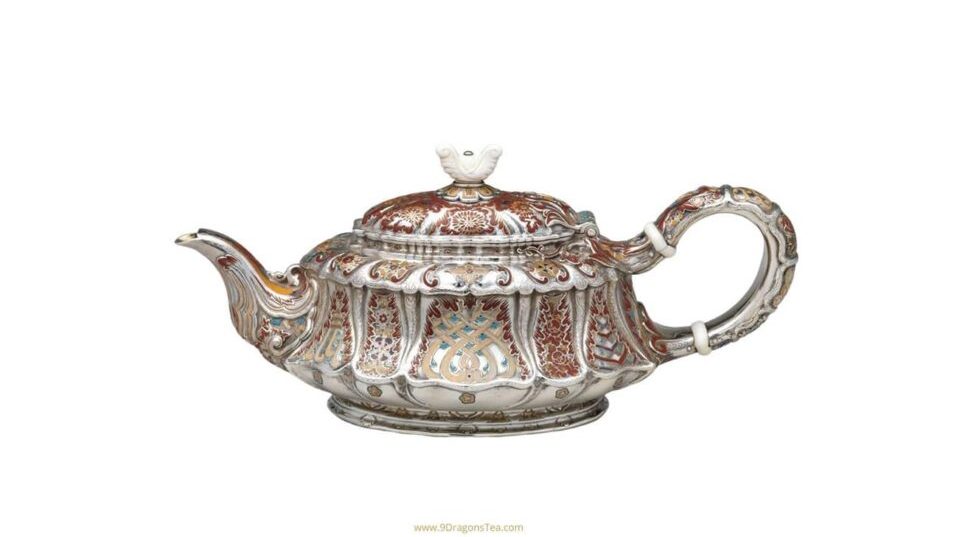Green Tea
Exotica, Fascination, And Romance…
14 Amazing Facts About Green Tea
The global output of green tea is anticipated to increase by 8.2% yearly and reach 2.97 million tons by 2023. What does that mean? Coffee used to be the morning craze to keep you energized throughout the day.
The jittery side effects and the GI problems urge anyone to find an alternative. That is where this drink enters the picture, providing a balance of energy and zen. With all these benefits, here are 14 amazing facts about green tea.
1. The Unique History of Green tea
The history of tea extends back over 5,000 years in ancient China. The Emperor Shen Nung developed this beverage around 2737 B.C.
When he slept outside with his crew, a few leaves from a wild tree floated into his pot of boiling water. Without noticing the color change, he drank the unusual fluid. He became captivated by its exquisite flavor and refreshing impact.
2. Contains Bioactive Compounds
Green tea contains plenty of polyphenols, which have anti-inflammatory and anti-cancer properties. It includes the catechin epigallocatechin-3-gallate (EGCG). These chemicals inhibit free radicals to prevent cell damage.
3. An Interesting Process: How to Make Green Tea?
After picking the leaves, they are left to wither for a few hours. The leaves are then steamed or pressed to get rid of the moisture. This process also helps preserve its antioxidant process.
One pound of tea requires around 2,000 small leaves. Tea trees occur wild in areas of Asia, but more than 25 nations produce them as a plantation crop. People harvest the best quality leaves from high altitudes.
4. Improve Brain Function
Caffeine, a well-known stimulant, is the primary active component in green tea. This amazing drink has less caffeine than coffee. It can also elicit a reaction without the jittery side effects.
It energizes the brain by inhibiting the neurotransmitter adenosine. This mechanism helps increase neuron signals as well as dopamine and norepinephrine levels. Studies show that caffeine and L-theanine from the tea may have synergistic effects.
5. The Taste Differs by Region
Green tea with a grassier taste originates from Japan. While a fruity and chocolatey essence came from China. If your drink has a gunpowder flavor, then it’s probably from Taiwan.
6. Fat Burner
Green tea extract helps increase calorie expenditure by 4%. It also boosts fat oxidation and speeds up the metabolic rate.
7. The Color is Misleading
Most green teas should appear light yellow when brewed properly. That’s unless it’s a Japanese sencha, which appears vividly green.
8. Never Leave Green Tea Alone for Too Long
Leaving this beverage in water for more than 4-5 minutes may increase the chlorophyll levels. This will create a bitter taste. For optimal results, soak in water for no more than three minutes.
9. Reduce Cancer Risk
Unregulated cell proliferation causes cancer. Oxidative damage may result in chronic inflammation, leading to tumor formation. Women who drink green tea daily have a 20–30 percent decrease in getting breast cancer.
Men who consumed green tea had a lower incidence of advanced prostate cancer. People who consume these leaves are 42 percent less likely to get colorectal cancer. To reap optimal health benefits, avoid adding milk; it lowers the antioxidant effects.
10. Safeguard against Alzheimer’s
Alzheimer’s disease is the most prevalent cause of dementia amongst seniors. Parkinson’s disease occurs from the loss of dopamine-producing neurons. Several studies show that the catechin components from green tea reduce dementia risk.
11. Reduce Mouth Odor
Catechins can inhibit bacterial development to decrease infection. Streptococcus Mutans is a common oral bacteria. It generates plaque buildup and is a major cause of cavities and tooth decay.
The catechins in green tea prevent the development of oral bacteria in the lab. This helps reduce foul breath and the trip to the dentist.
12. Reduce Puffy Eyes
Green tea can help reduce puffiness and bloodshot eyes. The strategy is to place chilled and soaked tea bags over the eyes.
The tannins in the tea provide a cooling effect. Vitamin K helps freshen tired and puffy eyes.
13. Prevent Type 2 Diabetes
Approximately one in ten Americans have Type 2 Diabetes. This condition leads to high blood sugar levels. This is due to insulin resistance or low levels of it.
Luckily, green tea increases insulin sensitivity and lowers blood sugar levels. Patients who drink this beverage every morning have a 42 percent lower risk of diabetes.
14. Combat Cardiovascular Problems
Heart disease and stroke are the major causes of mortality in the world. Green tea can reduce LDL and increase HDL through its antioxidant effect. This is why these tea lovers have up to a 31% decreased chance of dying from cardiovascular disease.
Different Types of Green Tea Varieties to Check Out
As you drink your morning cup, you may partake in traditional rituals to enjoy your day. It might be due to its scent, taste, and appearance. There is nothing quite like it.
Don’t feel overwhelmed by all the possibilities because you have come to the right place. You don’t need a Ph.D. to identify and enjoy the greatest cup of tea. You just need to sit back and check out all the cool varieties:
Japanese Sencha
Sencha is the most popular green tea in Japan, accounting for around 80% of the country’s output. The direct equivalent in English is “tea steeped in water.” In Japan, people are more likely to be offered this drink during meals and social gatherings.
It is well-liked for its sweet, grassy taste with pine and summer fruit overtones. During processing, most sencha is quickly steamed, leading to a golden hue.
Matcha Green Tea
Matcha is a full-bodied experience produced from processed, finely powdered tea leaves. The high nutritious value originates from both the powder and the drink. It begins with an astringent, vegetal flavor and develops into an everlasting sweetness.
To create matcha, combine one teaspoon of the powder with three to five ounces of water. Then heat it to 175 degrees Fahrenheit in a bowl with a wide rim and whisk until frothy. If you don’t have a chasen, you may use a kitchen whisk or a spoon.
Jasmine Green Tea
As one of the most well-known fragrant green teas, jasmine tea gained popularity in China. The history went back to the Qing Dynasty in the 17th century. During oxidation, the jasmine flower aroma mixes into green tea leaves.
The taste and aroma of jasmine are mild and grassy. Steep it at 175 degrees Fahrenheit for two to four minutes. The aroma and flavor will be enhanced by a longer infusion period.
Green Genmaicha Tea
Buddhist monks created Genmaicha by combining green tea with rice. If you prefer the flavor of coffee, you will adore Genmaicha. Steep Genmaicha for two minutes in water between 175 and 185 degrees Fahrenheit.
Gunpowder Green Tea
Each leaf in Chinese gunpowder green tea is wrapped into a tiny pellet. Its English name derives from its similarity to gunpowder grains. Pearl tea is another name for gunpowder tea or zh chá.
Gunpowder tea production in China goes all the way back to the Tang Dynasty in the seventh century. Rolling the leaves reduces damage during shipment and helps maintain their taste. Most gunpowder teas have a robust, smokey flavor and may also have pleasant oaky overtones.
Longjing Green Tea
Longjing or Dragon Well is the highest-quality, hand-made Chinese green tea. It comes from Longjing Village in Hangzhou, Zhejiang Province.
This beverage has a mellow, sweet, nutty taste that contrasts nicely with its vegetal overtones and rich body. As you drink Longjing, you may detect traces of chestnut and sweet peas. Steep this particular tea in water between 75 and 80 degrees Celsius for one to three minutes.
Peppermint Green Tea
This tea employs chopped mint to improve the aroma and underlying properties. The mint is both calming and energizing, accentuating the stimulating properties.
Steep at 170 degrees Fahrenheit for one to three minutes. Some people prefer it cold, so ice tea is also an amazing option.
Japanese Gyokuro
Jade dew is the direct translation of Gyokuro. Before harvesting, tea makers cover the plant for three to six weeks. This helps stimulate the synthesis of chlorophyll.
People frequently describe Gyokuro as having a “marine” flavor reminiscent of seaweed. Gyokuro demands a far lower steeping temperature than other green teas. When brewing, use water between 122-140 degrees Fahrenheit for two to three minutes.
Best Food That Pairs With Green Tea
Green tea, particularly sencha, pairs well with fish.
Another fantastic food pairing is chocolate. Cocoa gives chocolate its bitter flavor. The sweetness of green tea pairs well with the harshness of chocolate.
Where Can You Learn More About the Facts and the Benefits of Drinking Green Tea
Green tea has a rich history and health benefits. No wonder why people are incorporating this beverage into their lives. Plus, scientists are uncovering amazing facts like its health benefits and amazing culture.
Keep in mind that only high-quality green tea leaves can help you uncover its magic. If you are a tea enthusiast, we can show you a whole new world. For more facts about this fantastic drink, contact us today.
Watch a short clip as Christy takes you behind the scenes of 9 DRAGONS TEA.





A Love Affair That Brought Wars…
The Origin Of Matcha And Japanese Tea Ceremony
Fuel For The Spirit of Independence
The Crown, The Colony & the Tea Hunter

DISCOVER THE ART OF TEA
You’ll love our new artbook! A labor of love, this artbook showcases glorious images, taking you on a journey through ancient tea rituals and how these practices bring calmness, mindfulness, and tranquility through the ages.
